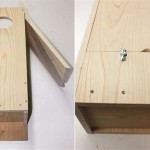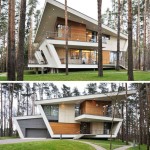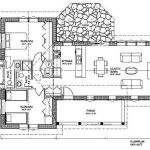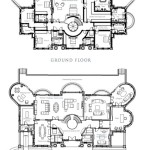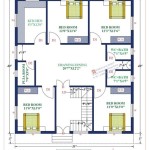A pool house floor plan is a design blueprint that outlines the layout and structure of a building specifically dedicated to complementing an outdoor swimming pool. It serves as a functional and comfortable space for poolside activities, storage, and relaxation. For instance, in a typical pool house, the floor plan would include designated areas for a bathroom, changing room, kitchen or kitchenette, seating and dining spaces, and possibly even a fire pit or fireplace for ambiance.
Planning a pool house requires careful consideration of various factors, such as the available space, desired amenities, and personal preferences. Whether you’re designing a detached structure or integrating the pool house with the main residence, a well-conceived floor plan is essential for maximizing space utilization, enhancing functionality, and creating a cohesive indoor-outdoor living experience.
In this article, we will delve into the key elements and considerations involved in designing a pool house floor plan. We will explore different layout options, material choices, and design principles to help you create a functional and inviting space that seamlessly complements your pool and outdoor living area.
When designing a pool house floor plan, consider these key points:
- Define the purpose and activities
- Determine the size and layout
- Choose durable materials
- Consider storage solutions
- Plan for indoor-outdoor flow
- Maximize natural light
- Incorporate amenities
- Ensure privacy
- Complement the pool design
By addressing these elements, you can create a functional and inviting pool house that enhances your outdoor living experience.
Define the purpose and activities
The first step in designing a pool house floor plan is to clearly define its purpose and intended activities. This will help you determine the necessary size, layout, and amenities required to create a functional and enjoyable space. Consider how you and your family will primarily use the pool house. Will it be a place to relax and entertain guests, a poolside retreat for changing and showering, or a combination of both? Identifying the main activities that will take place in the pool house will guide your design decisions.
Here are some common purposes and activities to consider:
- **Relaxation and entertaining:** If you plan to use the pool house for relaxation and entertaining, you’ll want to include comfortable seating areas, a dining space, and possibly a fire pit or fireplace for ambiance. You may also want to consider adding a wet bar or kitchenette for convenience.
- **Changing and showering:** If the primary purpose of the pool house is to provide a space for changing and showering, you’ll need to include a bathroom with a shower, toilet, and vanity. You may also want to include a changing area with lockers or benches.
- **Storage:** Pool houses are also great for storing pool equipment, toys, and other outdoor items. Be sure to include ample storage space in your design, such as cabinets, shelves, or a dedicated storage room.
- **Multipurpose use:** Many pool houses are designed for multipurpose use, combining relaxation, entertainment, changing, and storage all in one space. This is a great option if you have limited space or want to create a versatile poolside retreat.
Once you have defined the purpose and activities for your pool house, you can begin to develop a floor plan that meets your specific needs and preferences.
Determine the size and layout
Once you have defined the purpose and activities for your pool house, you need to determine the appropriate size and layout. The size of your pool house will depend on the number of people you want to accommodate, the amenities you want to include, and the available space on your property. The layout should be designed to maximize functionality and flow, while also creating a comfortable and inviting atmosphere.
- Consider the number of people: How many people will be using the pool house at any given time? If you plan on entertaining guests, you’ll need to make sure the space is large enough to accommodate everyone comfortably.
- Decide on the amenities: What amenities do you want to include in your pool house? A bathroom, changing area, kitchen, and storage space are all common amenities. If you have specific hobbies or interests, you may also want to consider adding a dedicated space for them, such as a game room or art studio.
- Maximize natural light: Natural light can make a pool house feel more spacious and inviting. When designing the layout, try to incorporate as many windows and doors as possible to let in natural light.
- Create a functional flow: The layout of your pool house should be designed to create a logical flow between different areas. For example, the changing area should be located near the bathroom, and the kitchen should be near the dining area.
By carefully considering the size and layout of your pool house, you can create a space that is both functional and enjoyable for years to come.
Choose durable materials
When choosing materials for your pool house, durability should be a top priority. The materials you select should be able to withstand the elements, including sun, rain, and humidity. They should also be easy to clean and maintain.
Here are some durable materials to consider for your pool house:
- Concrete:** Concrete is a durable and versatile material that can be used for both the interior and exterior of your pool house. It is strong, weather-resistant, and easy to clean. Concrete can be stained or painted to match your desired style.
- Brick:** Brick is another durable material that is well-suited for pool houses. It is fire-resistant, weather-resistant, and easy to maintain. Brick can be used to create a variety of architectural styles, from traditional to modern.
- Stone:** Stone is a beautiful and durable material that can add a touch of luxury to your pool house. It is weather-resistant and easy to clean. Stone can be used for both the interior and exterior of your pool house.
- Vinyl:** Vinyl is a low-maintenance material that is available in a variety of colors and styles. It is weather-resistant and easy to clean. Vinyl is a good option for pool houses that are located in areas with harsh weather conditions.
- Composite:** Composite materials are made from a combination of wood and plastic. They offer the beauty of wood with the durability of plastic. Composite materials are weather-resistant, easy to clean, and require little maintenance.
By choosing durable materials for your pool house, you can create a space that will last for years to come.
In addition to the materials listed above, you should also consider the following factors when choosing materials for your pool house:
- Slip resistance:** The flooring material around the pool should be slip-resistant to prevent accidents.
- UV resistance:** The materials used on the exterior of your pool house should be UV-resistant to prevent fading and damage from the sun.
- Moisture resistance:** The materials used in the bathroom and changing area should be moisture-resistant to prevent mold and mildew.
- Budget:** The cost of materials will vary depending on the type of material you choose. Be sure to factor in the cost of materials when planning your budget for your pool house.
By carefully considering the factors discussed above, you can choose durable materials that will create a beautiful and long-lasting pool house.
Consider storage solutions
When designing your pool house floor plan, don’t forget to consider storage solutions. Pool houses are often used to store pool equipment, toys, and other outdoor items. By including ample storage space in your design, you can keep your pool area organized and clutter-free.
Here are some storage solutions to consider for your pool house:
- Cabinets:** Cabinets are a great way to store pool equipment, toys, and other items. They can be installed in a variety of sizes and configurations to meet your specific needs. Cabinets can be made from a variety of materials, such as wood, metal, or plastic.
- Shelves:** Shelves are another great way to store pool items. They can be installed on walls or in closets. Shelves can be made from a variety of materials, such as wood, metal, or plastic.
- Baskets:** Baskets are a great way to store small items, such as pool toys and accessories. They can be placed on shelves, in cabinets, or on the floor. Baskets can be made from a variety of materials, such as wicker, fabric, or plastic.
- Hooks:** Hooks are a great way to store items that need to be hung up, such as towels, pool noodles, and hoses. Hooks can be installed on walls, in closets, or on the backs of doors. Hooks can be made from a variety of materials, such as metal, plastic, or wood.
- Storage shed:** If you need additional storage space, you may want to consider adding a storage shed to your pool area. Storage sheds can be used to store large items, such as pool furniture, mowers, and bikes.
By including ample storage space in your pool house floor plan, you can keep your pool area organized and clutter-free. This will make it more enjoyable for you and your family to relax and enjoy your pool.
In addition to the storage solutions listed above, you may also want to consider the following:
- Built-in storage:** Built-in storage is a great way to maximize space and create a more cohesive look. Built-in storage can be incorporated into the design of your pool house, such as benches with built-in storage or cabinets under the sink.
- Multipurpose furniture:** Multipurpose furniture is a great way to save space and add functionality to your pool house. For example, a coffee table with built-in storage can be used to store pool toys and accessories.
- Vertical storage:** Vertical storage is a great way to maximize space in a small pool house. For example, you can install shelves on the walls or use stackable bins to store items vertically.
By carefully considering your storage needs and incorporating creative storage solutions into your pool house floor plan, you can create a space that is both functional and stylish.
Plan for indoor-outdoor flow
When designing your pool house floor plan, it is important to consider the flow of traffic between the indoor and outdoor spaces. A well-planned indoor-outdoor flow will make it easy and enjoyable to move between the two areas, and it will also help to create a cohesive and inviting atmosphere.
- Create multiple access points:** One of the best ways to improve indoor-outdoor flow is to create multiple access points between the two spaces. This will allow people to move freely between the pool and the pool house without having to go through a single door or hallway.
- Use large doors and windows:** Large doors and windows can help to blur the lines between the indoor and outdoor spaces. This will create a more open and inviting atmosphere, and it will also make it easier to enjoy the views of the pool and surrounding landscape.
- Extend the roofline:** Extending the roofline of the pool house over the patio or deck can help to create a more cohesive look and feel between the two spaces. This will also provide some protection from the sun and rain, making it more enjoyable to spend time outdoors.
- Use similar materials:** Using similar materials for the indoor and outdoor spaces can help to create a more cohesive look and feel. For example, you could use the same flooring material for both the pool deck and the pool house interior.
By carefully considering the flow of traffic between the indoor and outdoor spaces, you can create a pool house that is both functional and inviting. This will make it more enjoyable for you and your family to relax and enjoy your pool.
Maximize natural light
Natural light can make a pool house feel more spacious and inviting. It can also help to reduce energy costs. There are several ways to maximize natural light in your pool house floor plan.
One way to maximize natural light is to use large windows and doors. Windows and doors allow sunlight to enter the pool house from multiple directions. This creates a brighter and more open atmosphere.
Another way to maximize natural light is to use skylights. Skylights are windows that are installed in the roof. They allow sunlight to enter the pool house from above. This can help to brighten even the darkest corners of the pool house.
In addition to windows and skylights, you can also use reflective materials to maximize natural light. Reflective materials, such as mirrors and white paint, can help to bounce sunlight around the pool house. This can make the space feel even brighter.
By following these tips, you can maximize natural light in your pool house floor plan. This will create a brighter and more inviting space that you and your family can enjoy for years to come.
Incorporate amenities
Amenities can make your pool house more enjoyable and comfortable. When planning your pool house floor plan, consider which amenities are important to you and your family. Some popular amenities include:
- Kitchen or kitchenette:** A kitchen or kitchenette can be a great addition to a pool house. It allows you to prepare and store food and drinks without having to go back and forth to the main house. A kitchen or kitchenette can also be used to store pool supplies, such as towels and sunscreen.
- Bathroom:** A bathroom is a must-have for any pool house. It provides a place for guests to change and use the restroom. A bathroom can also be used to store toiletries and other bathroom supplies.
- Changing area:** A changing area is a great way to keep the pool house clean and organized. It provides a place for guests to change into and out of their swimsuits. A changing area can also be used to store wet towels and swimsuits.
- Outdoor shower:** An outdoor shower is a great way to rinse off before and after swimming. It can also be used to wash off sunscreen and other pool chemicals. An outdoor shower is a great way to keep the pool house clean and free of sand and dirt.
In addition to the amenities listed above, you may also want to consider adding the following to your pool house floor plan:
- Fireplace or fire pit:** A fireplace or fire pit can create a cozy and inviting atmosphere in your pool house. It can be used to warm up on cool evenings or to create a relaxing ambiance.
- Hot tub:** A hot tub is a great way to relax and unwind after a swim. It can also be used to soothe sore muscles and improve circulation.
- Entertainment system:** An entertainment system can provide entertainment for guests while they are in the pool house. It can be used to play music, watch movies, or play video games.
- Storage:** Storage is important for any pool house. It can be used to store pool supplies, towels, and other items. Storage can be incorporated into the design of the pool house, such as cabinets, shelves, or a storage shed.
By carefully considering your needs and preferences, you can incorporate amenities into your pool house floor plan that will make it a more enjoyable and comfortable space for you and your family.
Here are some additional tips for incorporating amenities into your pool house floor plan:
- Consider the size and layout of your pool house:** The size and layout of your pool house will determine which amenities you can incorporate. A larger pool house will have more space for amenities, while a smaller pool house will need to be more selective.
- Prioritize your needs:** Decide which amenities are most important to you and your family. Once you have prioritized your needs, you can start to plan the layout of your pool house.
- Be creative:** There are many ways to incorporate amenities into your pool house floor plan. Be creative and come up with solutions that work for your space and needs.
By following these tips, you can create a pool house floor plan that is both functional and stylish.
Ensure privacy
Privacy is an important consideration for any pool house floor plan. You want to create a space where you and your guests can relax and enjoy the pool without feeling like you’re being watched. There are several ways to ensure privacy in your pool house floor plan.
One way to ensure privacy is to plant trees or shrubs around the pool house. This will create a natural barrier between the pool house and the surrounding area. You can also use fences or walls to create a more private space. If you have a pool house that is attached to your home, you can use curtains or blinds to block the view from the inside of the house.
Another way to ensure privacy is to carefully place windows and doors. Avoid placing windows and doors directly facing the street or other public areas. Instead, place windows and doors in areas that are more private, such as facing the backyard or a side yard.
You can also use landscaping to create privacy around your pool house. Plant trees or shrubs around the perimeter of the pool house to create a natural screen. You can also use trellises or arbors to create a more private space.
By following these tips, you can create a pool house floor plan that ensures privacy for you and your guests.
Complement the pool design
When designing your pool house floor plan, it is important to consider how the pool house will complement the design of the pool. The pool house should be designed in a style that is consistent with the pool and the surrounding landscape. This will create a cohesive and inviting outdoor space.
Consider the architectural style of the pool
The architectural style of the pool should be reflected in the design of the pool house. For example, if the pool is a modern design, the pool house should also be modern in style. Similarly, if the pool is a traditional design, the pool house should also be traditional in style. This will create a cohesive and visually appealing outdoor space.
Use similar materials
Using similar materials for the pool house and the pool will help to create a cohesive look. For example, if the pool is made of concrete, the pool house could also be made of concrete. Similarly, if the pool is made of stone, the pool house could also be made of stone. Using similar materials will help to create a unified and polished look.
Coordinate the colors
The colors of the pool house should be coordinated with the colors of the pool and the surrounding landscape. This will create a harmonious and inviting outdoor space. For example, if the pool is a blue color, the pool house could be painted a light blue color. Similarly, if the pool is surrounded by a green lawn, the pool house could be painted a light green color.
By following these tips, you can design a pool house floor plan that complements the design of the pool and creates a cohesive and inviting outdoor space.










Related Posts

